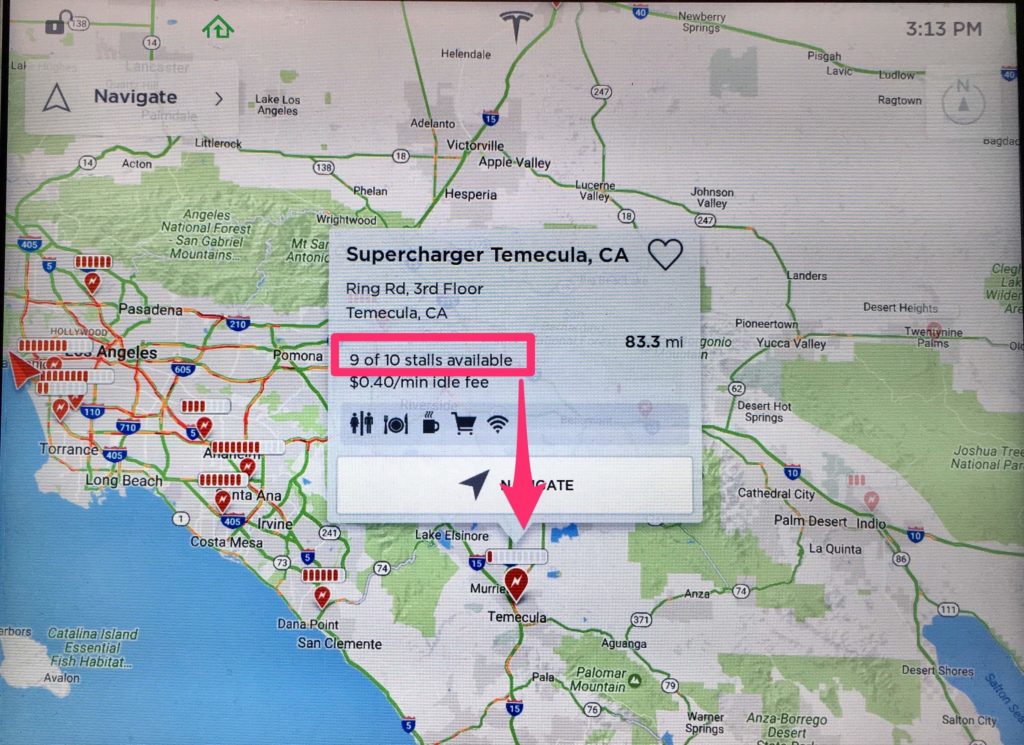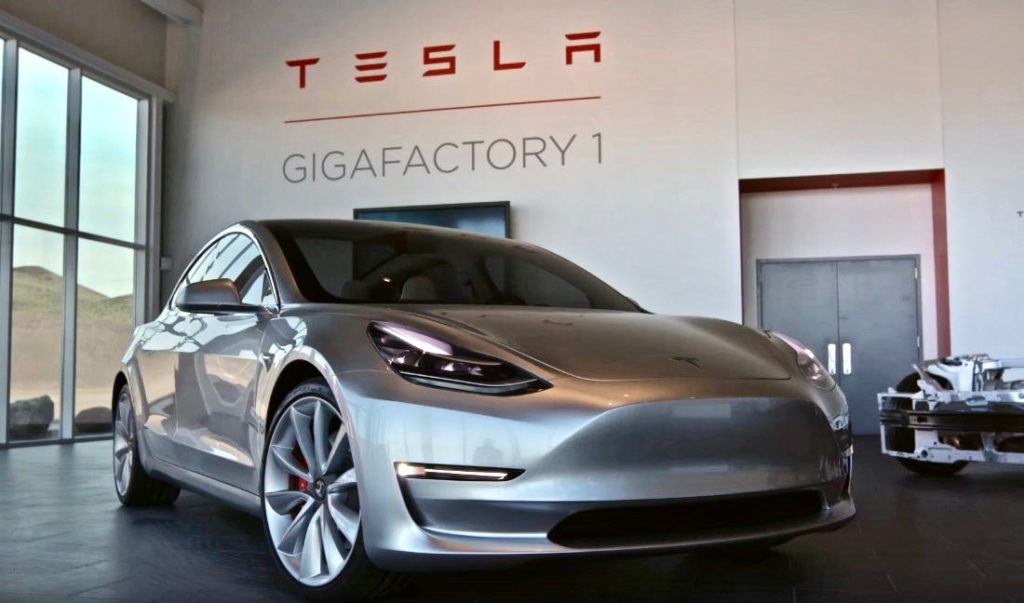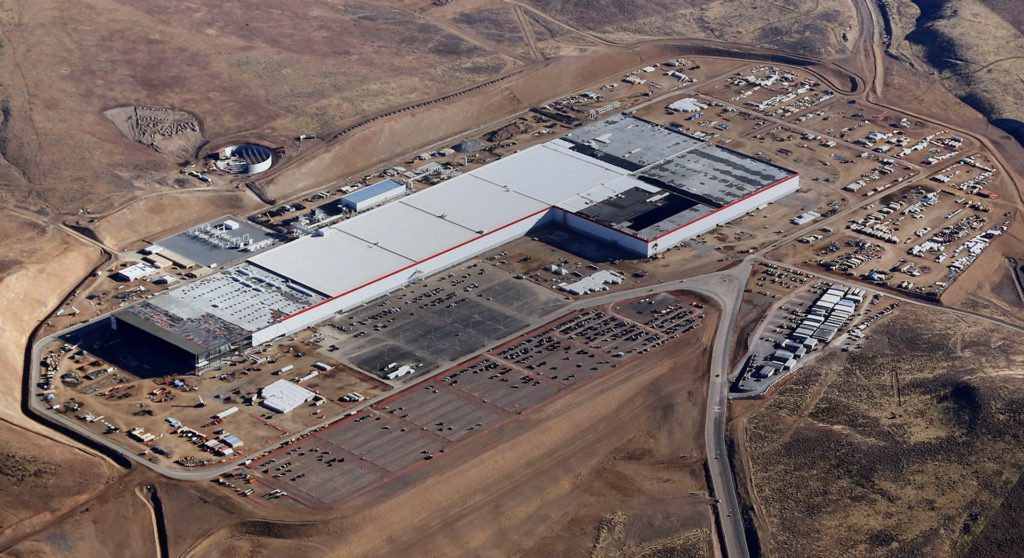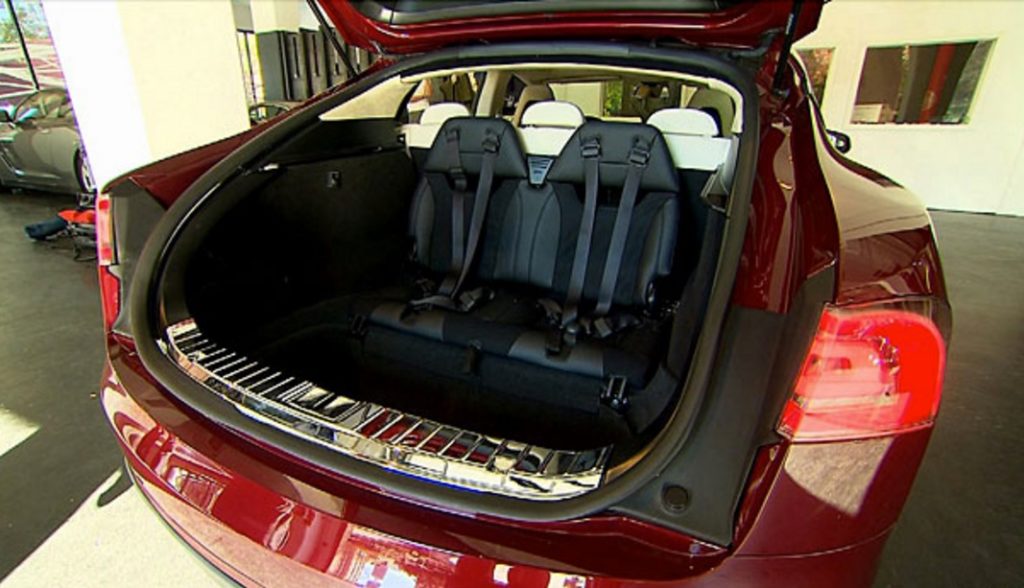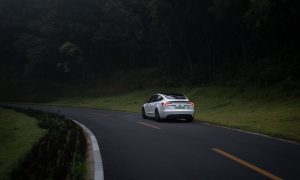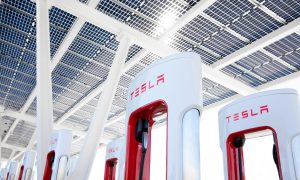News
Tesla Top 5 Week in Review: Model 3, Gigafactory, a brush with the law, and more
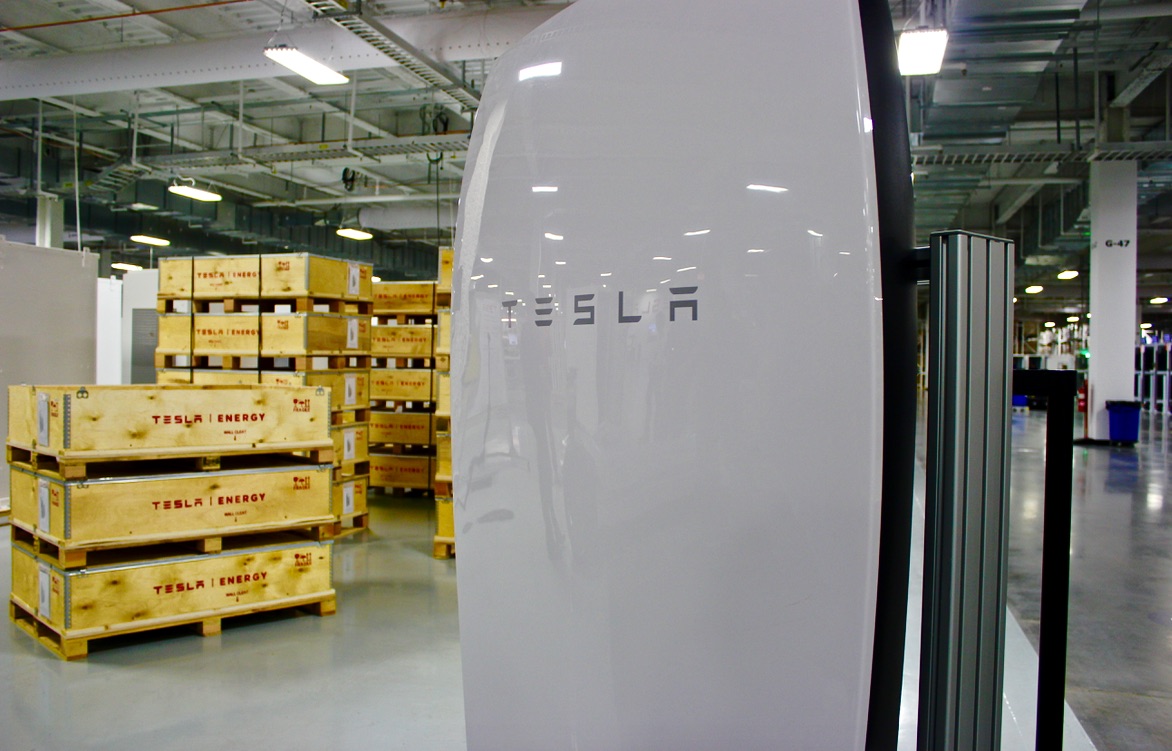
The Tesla Model 3 was big news again this week, as Tesla announced a February date for pilot production. Also, no longer will occupied Supercharger stations be so stress-inspiring, as Tesla has an onboard map update that shows Supercharger location availability. With news of a proposed federal import tax a topic of serious discussion, Tesla seemed on the winning side, with its prominent domestic manufacturing. The Gigafactory construction costs rose above $1 billion this week as noted through permits that Tesla filed. And a story emerged in which another Model S driver was detained by police who investigated reports of an abduction, only to quickly ascertain that rear-facing seats were the real culprit. Here are those stories in review.
Tesla to begin pilot production of Model 3 on February 20
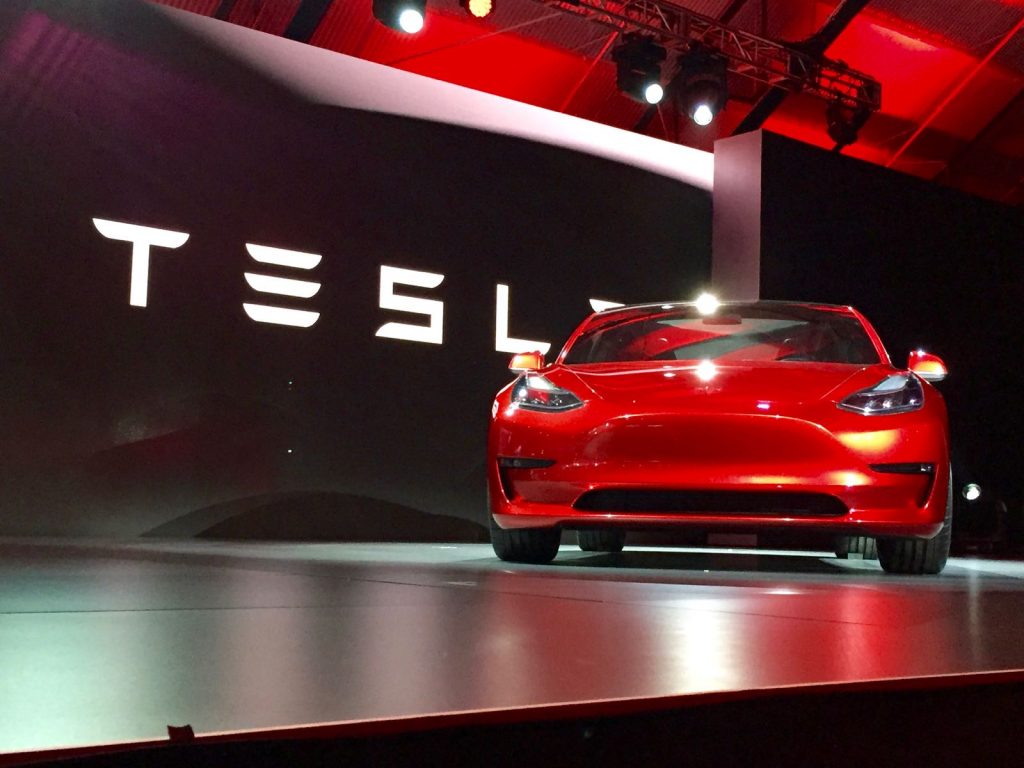
Red Tesla Model 3 at the vehicle unveiling event on March 31, 2016 from the company’s Hawthorne, CA Design Center.
As the more affordable all-electric vehicle in the Tesla catalog, the announcement of Model 3 pilot production staring on February 20 brought smiles to a lot of faces. The Model 3 will have a base price of $35,000, and that’s before government tax incentives. The appealing Model 3 price point is just a start: it will offer a range of at least 215 miles. The Model 3 pilot production creates a vehicle that is targeted for demonstration and evaluation, as pilot manufacturing is used to calibrate the assembly line, assess the car against design standards, and confirm quality of outside suppliers’ components. Some Model 3 pilot vehicles will be destined for safety crash tests, while others will generate media visibility. Importantly, strong demand for the Model 3 will push Tesla’s production capabilities, already exceeding 373,000 pre-orders.
Tesla unlocks real-time Supercharger occupancy data on vehicle map
Any Tesla owner will attest to the frustration that happens when you pull up to a Supercharger stall and find that it’s occupied. Knowing what’s happening at Superchargers ahead is newly improved. Tesla owners can now see Supercharger stall availability at a particular moment in time. Owners have already begun to report that data has appeared via the map app in the form of little bars over Supercharger stations that display availability. This is a very important component of Tesla’s overall goal to reduce range anxiety for its customers and to provide the smoothest and easiest vehicle experience of any currently available on the market.
Tesla on the winning end of proposed U.S. import tax
A new study suggests that Tesla would be well-positioned if a proposed federal tax on imports is implemented. Baum & Associates LLC determined that most automakers would need to add thousands of dollars to vehicle sticker prices to compensate for costs incurred with the import tax. Jaguar’s Land Rover would experience the worst case scenario with price increases near to $17,000, as it imports all its vehicles. Companies with significant domestic manufacturing would absorb only the smallest price increases among major automakers, with Ford accruing about $282 per vehicle and General Motors Co. at about $995. With its extensive domestic manufacturing, Tesla is the sole automaker that may be able to keep prices level. The study’s goals were to expose the relative impact of the tax plan on each automaker, according to Alan Baum, founder of Michigan’s Baum & Associates.
Tesla Gigafactory surpasses $1 billion in construction costs: Section D/E addendum filed
Tesla, Inc. has been granted a total of 153 building permits for its Gigafactory to date from the Storey County Community Development Department. In sum, the permits correlate with an estimated $1.03 billion in construction costs. Storey County remitted these permits after receiving $5.58 million in fees from Tesla. Twenty-nine permits are mentioned in an addendum, which total $542.65 million of construction work. Many of the other permits relate to the installation and anchoring of the equipment needed for the factory. Other permits include a nitrogen yard, a thermal energy storage tank, and the Panasonic equipment installed in Section B and C. In addition, the installation and expansion of the contractor accommodation indicated the number of construction workers on site has increased.
Tesla Model S rear-facing child seats lead to false kidnapping report
Tesla Model S owners who have opted for additional, rear-facing seats are aware that their size and location offers a fun and efficient place for youngsters to sit. The Sheriff’s Department in Newhall, California, who responded to reports of an abduction, didn’t have this same background knowledge about the Tesla Model S. It turns out that “it was not a kidnapping,” according to Lt. Rob Hahnlein, who spoke on behalf of the Sheriff’s Deparment, but, rather, an individual assisting a child into a Tesla. “The new Teslas have a weird back seat,” Hahnlein acknowledged, “and when they put the (child) in the back seat it looked like they were putting them in the trunk.” The Sheriff’s Department noted how they are obliged to investigate every kidnapping report until the situation is resolved. They also detained the Tesla driver at gun point with the child observing from the seats in question.
News
Tesla begins Robotaxi certification push in Arizona: report
Tesla seems serious about expanding its Robotaxi service to several states in the coming months.

Tesla has initiated discussions with Arizona transportation regulators to certify its driverless Robotaxi service in the state, as per a recent report from Bloomberg News. The move follows Tesla’s launch of its Robotaxi pilot program in Austin, Texas, as well as CEO Elon Musk’s recent comments about the service’s expansion in the Bay Area.
The Arizona Department of Transportation confirmed to Bloomberg that Tesla has reached out to begin the certification process for autonomous ride-sharing operations in the state. While details remain limited, the outreach suggests that Tesla is serious about expanding its driverless Robotaxi service to several territories in the coming months.
The Arizona development comes as Tesla prepares to expand its service area in Austin this weekend, as per CEO Elon Musk in a post on X. Musk also stated that Tesla is targeting the San Francisco Bay Area as its next major market, with a potential launch “in a month or two,” pending regulatory approvals.
Tesla first launched its autonomous ride-hailing program on June 22 in Austin with a small fleet of Model Y vehicles, accompanied by a Tesla employee in the passenger seat to monitor safety. While still classified as a test, Musk has said the program will expand to about 1,000 vehicles in the coming months. Tesla will later upgrade its Robotaxi fleet with the Cyercab, a two-seater that is designed without a steering wheel.
Sightings of Cybercab castings around the Giga Texas complex suggests that Tesla may be ramping the initial trial production of the self-driving two-seater. Tesla, for its part, has noted in the past that volume production of the Cybercab is expected to start sometime next year.
In California, Tesla has already applied for a transportation charter-party carrier permit from the state’s Public Utilities Commission. The company is reportedly taking a phased approach to operating in California, with the Robotaxi service starting with pre-arranged rides for employees in vehicles with safety drivers.
News
Tesla sets November 6 date for 2025 Annual Shareholder Meeting
The automaker announced the date on Thursday in a Form 8-K.

Tesla has scheduled its 2025 annual shareholder meeting for November 6, addressing investor concerns that the company was nearing a legal deadline to hold the event.
The automaker announced the date on Thursday in a Form 8-K submitted to the United States Securities and Exchange Commission (SEC). The company also listed a new proposal submission deadline of July 31 for items to be included in the proxy statement.
Tesla’s announcement followed calls from a group of 27 shareholders, including the leaders of large public pension funds, which urged Tesla’s board to formally set the meeting date, as noted in a report from The Wall Street Journal.
The group noted that under Texas law, where Tesla is now incorporated, companies must hold annual meetings within 13 months of the last one if requested by shareholders. Tesla’s previous annual shareholder meeting was held on June 13, 2024, which placed the July 13 deadline in focus.
Tesla originally stated in its 2024 annual report that it would file its proxy statement by the end of April. However, an amended filing on April 30 indicated that the Board of Directors had not yet finalized a meeting date, at least at the time.
The April filing also confirmed that Tesla’s board had formed a special committee to evaluate certain matters related to CEO Elon Musk’s compensation plan. Musk’s CEO performance award remains at the center of a lengthy legal dispute in Delaware, Tesla’s former state of incorporation.
Due to the aftermath of Musk’s legal dispute about his compensation plan in Delaware, he has not been paid for his work at Tesla for several years. Musk, for his part, has noted that he is more concerned about his voting stake in Tesla than his actual salary.
At last year’s annual meeting, TSLA shareholders voted to reapprove Elon Musk’s compensation plan and ratified Tesla’s decision to relocate its legal domicile from Delaware to Texas.
Elon Musk
Grok coming to Tesla vehicles next week “at the latest:” Elon Musk
Grok’s rollout to Tesla vehicles is expected to begin next week at the latest.

Elon Musk announced on Thursday that Grok, the large language model developed by his startup xAI, will soon be available in Tesla vehicles. Grok’s rollout to Tesla vehicles is expected to begin next week at the latest, further deepening the ties between the two Elon Musk-led companies.
Tesla–xAI synergy
Musk confirmed the news on X shortly after livestreaming the release of Grok 4, xAI’s latest large language model. “Grok is coming to Tesla vehicles very soon. Next week at the latest,” Musk wrote in a post on social media platform X.
During the livestream, Musk and several members of the xAI team highlighted several upgrades to Grok 4’s voice capabilities and performance metrics, positioning the LLM as competitive with top-tier models from OpenAI and Google.
The in-vehicle integration of Grok marks a new chapter in Tesla’s AI development. While Tesla has long relied on in-house systems for autonomous driving and energy optimization, Grok’s integration would introduce conversational AI directly into its vehicles’ user experience. This integration could potentially improve customer interaction inside Tesla vehicles.
xAI and Tesla’s collaborative footprint
Grok’s upcoming rollout to Tesla vehicles adds to a growing business relationship between Tesla and xAI. Earlier this year, Tesla disclosed that it generated $198.3 million in revenue from commercial, consulting, and support agreements with xAI, as noted in a report from Bloomberg News. A large portion of that amount, however, came from the sale of Megapack energy storage systems to the artificial intelligence startup.
In July 2023, Musk polled X users about whether Tesla should invest $5 billion in xAI. While no formal investment has been made so far, 68% of poll participants voted yes, and Musk has since stated that the idea would be discussed with Tesla’s board.
-

 Elon Musk1 week ago
Elon Musk1 week agoTesla investors will be shocked by Jim Cramer’s latest assessment
-

 Elon Musk3 days ago
Elon Musk3 days agoElon Musk confirms Grok 4 launch on July 9 with livestream event
-

 Elon Musk15 hours ago
Elon Musk15 hours agoxAI launches Grok 4 with new $300/month SuperGrok Heavy subscription
-

 News7 days ago
News7 days agoTesla Model 3 ranks as the safest new car in Europe for 2025, per Euro NCAP tests
-

 Elon Musk2 weeks ago
Elon Musk2 weeks agoA Tesla just delivered itself to a customer autonomously, Elon Musk confirms
-

 Elon Musk1 week ago
Elon Musk1 week agoxAI’s Memphis data center receives air permit despite community criticism
-

 Elon Musk2 weeks ago
Elon Musk2 weeks agoTesla’s Omead Afshar, known as Elon Musk’s right-hand man, leaves company: reports
-

 News2 weeks ago
News2 weeks agoXiaomi CEO congratulates Tesla on first FSD delivery: “We have to continue learning!”

